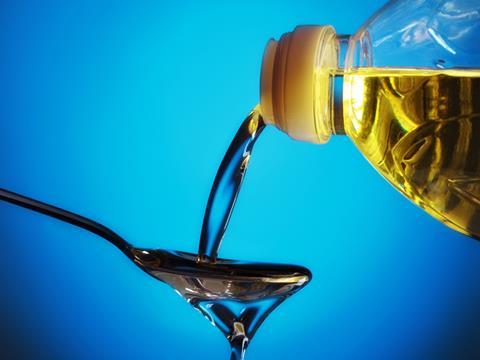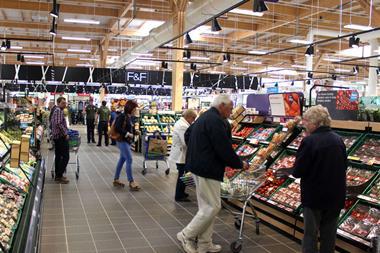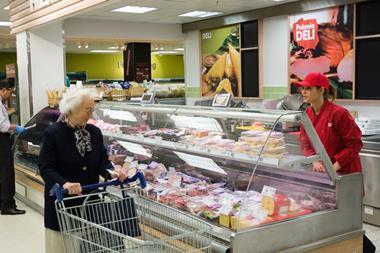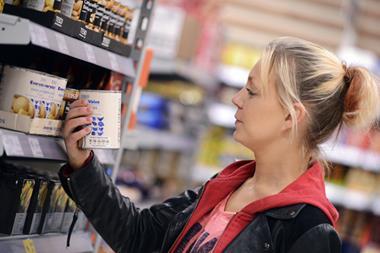The pound has fallen 12.5% against the dollar since the EU referendum result (hitting a 31-year low of $1.29 this week), and is down 10.25% against the euro to €1.17, its lowest level since 2013.
So food price inflation looks inevitable? But is it? When will it kick in? And which products and categories will be most vulnerable? (And do any stand to benefit from the post-Brexit volatility?)
Until now, lower commodity costs and the fierce price war among the supermarkets has resulted in a sustained period of shop price deflation. According to The Grocer Price Index it eased to -2.77% in the year to 1 July (from a historic low of -3.07% the previous month). And shop price deflation continued for a 38th month in June according to the latest BRC-Nielsen Shop Price Index.
But the weak pound and Britain’s negative balance of trade on food and drink means prices in store will “eventually rise again”, says BRC chief executive Helen Dickinson.
However, the time it takes for any price increases to make a re-appearance will depend on a combination of factors, including “the value of the pound, commodity prices… and continuing fierce competition [among] some retailers”.
“For now and for the short term at least, the good news for consumers is set to continue,” she adds.
The situation for retailers themselves is more mixed. Nielsen head of retailer and business insight Mike Watkins believes the relief inflation might provide needs to be offset against “increased costs from the national living wage, investment in multi-channel and volatile customer demand”.
The most immediate inflationary effects look likely to be felt at the petrol station. As oil is bought in dollars and Brent crude prices reasonably stable at $48.17 per barrel as of Wednesday, the weak pound could see higher prices on forecourts “within days”, says Shore Capital analyst Clive Black.
“If the oil price falters, that might mitigate the pain,” he says. “But if the pound remains weak and oil prices remain stable, we could see some of the Brexit impact hitting forecourts.”
The AA believes average fuel prices will increase 2-3ppl in the next fortnight, although it points out this is still around 5-6ppl cheaper than this time last year due to the fall in global oil prices.

However, one supermarket CEO believes it could be higher. “The cost of the ‘liquid’ ex vat ex duty is relatively low, so a 10% change in either (assuming the other doesn’t change) is c4-5ppl at today’s prices. The oil price dropped post Brexit, and the pound did as well, of course, but on balance forecourt prices will go up, and that’s probably the first impact customers will see (travel being the other if you are going on holiday).”
The impact doesn’t end there, of course. With oil an important input cost across fmcg (in terms of everything from fertiliser and packaging to key edible oils such as palm oil, not to mention distribution, heating and refrigeration costs), many categories and products will face inflationary pressures.
Walloped
To what extent these will be passed on to consumers is less clear at this stage than it is with forecourt prices. Some categories will be more vulnerable than others, depending on the mix of ingredients, with dollar denominated commodities - even those such as cocoa, coffee and bananas that are not historically linked to oil prices - worse affected than euro-denominated ones.
- Petrol: after falling to a seven-year low of 101ppl in February, forecourt prices had risen 10% to 111.8ppl by June, and experts predict a further rise of 2-5ppl within days.
- Bacon: we’re not self-sufficient in any meat but bacon is particularly exposed as at least 60% is imported, and more if you include imported fresh pork that’s cured in the UK.
- Chocolate: September cocoa futures hit a 39-year high of £2,495/tonne on Wednesday, driven by long-term supply-led shortages and now shorter-term currency movements.

- Edible oil: olive oil is traded in euros but palm oil, soya oil and groundnut oil are more affected as they are traded in dollars (sunflower oil trades in a mixture of both)
- Bananas: all imported fruit & veg prices are vulnerable, none more so than bananas (stable at 68p per kilo for two years) due to sheer volumes and the fact they’re traded in dollars.

- Dairy: Britain’s £1bn dairy trade deficit mostly relates to cheese, butter and yoghurts but liquid milk is also vulnerable, as prices are rock bottom and predicted to increase.
- Wine: while the UK is relatively self-sufficient in beer, cider and spirits, we import 1.3 billion litres of wine (HMRC), with UK production amounting to just 4.7 million litres.

- Coffee: Arabica prices are already 12.7% up yoy to $3,186/tonne. At a Starbucks or Costa the ingredients account for a far smaller percentage than in a retail jar.
But as one leading branded supplier source says: “Euros, dollars, it doesn’t matter, we’ll all be walloped by the currency impact”.
And while some suppliers have hedged for up to 18 months against the referendum outcome, helping to blunt the worst of the impact in the short terms, some haven’t, or have hedged for as little as two to three months, due to their misplaced faith in Britain voting to remain.
And whatever the position taken in the short term, hedging can’t protect companies forever, warns John David Roeg, senior analyst at Rabobank. “Eventually the hedge will run out and you will have to pay a higher price for goods from the Continent.”
Sectors where margins are tight even at the best of times - like fresh produce or meat - will be most at risk, experts believe.
“There could be quite some movement in trade flows,” he adds. “Bacon is one of the best examples. The UK imports the majority of it from countries like the Netherlands and Denmark, and if you have an agreement to pay in euros the price will eventually go up.”
Suppliers are well aware of the potential consequences. Some have already triggered force majeure clauses, with sectors heavily reliant on imports such as fresh berries and meat especially affected, it is understood.
Seasonally affected
These effects are only likely to get worse as winter hits and the UK produce season ends. Fruit and veg is one obvious area that will experience a price rise.
“As we shift to the Spanish supply period it’s obvious the devaluation in the pound will eventually have an impact,” says G’s Fresh marketing director Anthony Gardiner. “The problem our supply chain has is there isn’t a lot of fat in there to be able to absorb a shift in price without passing it on to the consumer.”
Weaker sterling could even benefit domestic dairy producers, adds John Allen of Kite Consulting. Coupled with a tightening in global supply, he believes farmgate prices could increase by as much as 10% over the next two years.
As for whether or when retailers will pass “inflationary pressures” on to consumers, Sainsbury’s CEO Mike Coupe said “it is too early to say”.
But if the pound remains weak, prices will have to go up, adds the other supermarket CEO. “It’s likely to be staggered, depending on the timing and the length of contracts, but at some point, bosses are going to realise, unless they increase their prices they’re going to start losing money and once it kicks in, quite quickly in some categories. The big question is: who will blink first?”



















No comments yet